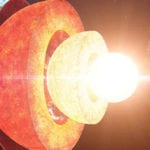 Music
Music  Music
Music  History
History 10 Less Than Jolly Events That Occurred on December 25
 Weird Stuff
Weird Stuff 10 Funny Ways That Researchers Overthink Christmas
 Politics
Politics 10 Political Scandals That Sent Crowds Into the Streets
 Weird Stuff
Weird Stuff Ten Bizarre Facts About The Doge Meme
 Our World
Our World 10 Ways Your Christmas Tree Is More Lit Than You Think
 Movies and TV
Movies and TV The 10 Coolest Stars to Set Sail on The Love Boat
 History
History 10 Things You Didn’t Know About the American National Anthem
 Technology
Technology Top 10 Everyday Tech Buzzwords That Hide a Darker Past
 Humans
Humans 10 Everyday Human Behaviors That Are Actually Survival Instincts
 Music
Music 10 Surprising Origin Stories of Your Favorite Holiday Songs
 History
History 10 Less Than Jolly Events That Occurred on December 25
 Weird Stuff
Weird Stuff 10 Funny Ways That Researchers Overthink Christmas
Who's Behind Listverse?

Jamie Frater
Head Editor
Jamie founded Listverse due to an insatiable desire to share fascinating, obscure, and bizarre facts. He has been a guest speaker on numerous national radio and television stations and is a five time published author.
More About Us Politics
Politics 10 Political Scandals That Sent Crowds Into the Streets
 Weird Stuff
Weird Stuff Ten Bizarre Facts About The Doge Meme
 Our World
Our World 10 Ways Your Christmas Tree Is More Lit Than You Think
 Movies and TV
Movies and TV The 10 Coolest Stars to Set Sail on The Love Boat
 History
History 10 Things You Didn’t Know About the American National Anthem
 Technology
Technology Top 10 Everyday Tech Buzzwords That Hide a Darker Past
 Humans
Humans 10 Everyday Human Behaviors That Are Actually Survival Instincts
10 Seemingly Impossible Things Made Possible By Science
We know science does amazing things all the time, but as we move into the future, scientific achievement is starting to border on magic. Science is constantly trying to do the impossible and is definitely succeeding at it, too.
10Teleportation

Humanity has been searching for a method of true teleportation for a long time, but it’s always felt like asking too much of science. And then science went ahead and proved it was possible. We’ve explained the phenomenon of quantum entanglement before. Researchers from Delft University of Technology were able to teleport information across the room and prove the quantum entanglement theory in practice.
They isolated a pair of electrons in two diamonds at a distance from each other. According to theoretical entanglement, changes to the spin in one should have resulted in the second one changing its spin accordingly. That is exactly what happened—the change in one diamond affected the other over a distance of 10 meters (32 ft). The experiment worked 100 percent of the time. The researchers are now working on increasing the distance, which should still work if the theory is correct. If experiments over larger distances are successful, we will very soon be able to securely teleport information through quantum particles without any vulnerable pathways in between.
9Tying Light In Knots

According to everything we know, light is supposed to move in straight lines. Apparently, someone wanted to change that. Scientists from the Universities of Glasgow, Bristol, and Southampton were the first ones to tie light into knots, something that was only thought of as an abstract mathematical concept before. These knots were created using holograms, which directed the flow of light around areas of darkness using knot theory, a branch of math inspired by knots in real life.
One of the lead researchers explains light as a river that can go straight as well as in whirlpools. The holograms were specially constructed and controlled by computers. Apparently, you can also bend your own light beam into a knot if you have their hologram. The findings go a long way in demonstrating that the future of optics will be anything but boring.
8Objects That Evolve Themselves
There’s still some time before everyone starts using 3-D printing technology, but science’s eyes are already fixed on the next step: 4-D printing. While it may sound too complex to most of us, the fourth dimension is time, which means that the next generation of printers won’t just be able to print anything you want, but the printed objects will also be able to change and adapt on their own. Researchers have already unveiled a 4-D printer capable of producing strands of materials that can fold themselves into simple shapes like cubes over time. That may not sound like much, but it has the potential to change science forever.
We will soon be able to manufacture machines that can reach inaccessible areas—deep wells, for example—to carry out maintenance. Medical operations could be independently carried out by machines made with these materials. These machines are essentially robots that are printed rather than manufactured. Water pipes would be able sense what to do during an overflow on their own. Since 4-D printing essentially enables us to make materials that can transform themselves in any way we like, the possibilities are endless. It’s safe to say that it’s going to take some time to move on to printing bigger objects that can evolve themselves in more complex ways. But looking at how quickly 3-D technology has caught on, it probably won’t take too long.
7Black Holes In Labs

Black holes have been a staple of popular fiction for a long time, yet making an artificial one has never been possible. At least not until researchers from Southeast University of Nanjing, China figured out a way to approximately mimic a black hole in the lab. They created a circuit with a kind of material used to change the passage of electromagnetic waves. It is similar to the material used to attain invisibility, but instead of altering light, this setup is done with microwaves. These “meta-materials” absorb electromagnetic radiation and convert it to heat in a manner similar to a black hole.
This has a number of useful applications, particularly in energy production. One of the things science needs to figure out is how to replicate this success using light, because the wavelength of light is much smaller than that of a microwave. Nonetheless, this is the first time a black hole has been emulated in controlled conditions. It may only be a matter of time before black holes are a part of our day-to-day lives.
6Stopping Light In Its Tracks
Einstein was the first one to realize that nothing can go faster than the speed of light, but he didn’t really say anything about making light go slower. In an experiment conducted at Harvard University, scientists were able to slow down light to about 20 kilometers per hour (12.4 mph). As if that wasn’t enough, they went ahead to bring it to a complete stop. The scientists used a supercooled material known as the “Bose-Einstein condensate” to achieve this. The condensate is produced at temperatures of just some billionth of a degree hotter than absolute zero, so that atoms have the least amount of energy to function. Keep in mind that absolute zero is an abstract concept that can’t actually be reached. This is probably the closest we’ve ever come to it.
While scientists have previously slowed light down to as little as 61 kilometers per hour (38 mph), this was the first time it has been brought to a complete halt. The light particle even left a hologram where it had stopped, for once looking like stable matter instead of the traveling wave that it usually is. Because it’s more constant in that form, the halted particle of light can even be put on a shelf, for example. What’s more, now that people have proven that light can be stopped, some researchers are even working on reversing its direction.
5Producing Antimatter In The Lab
Antimatter is possibly the answer to all our future energy needs. Yet, for all their efforts, scientists have not been able to find as much of it in the universe as matter, which happens to be a big mystery in itself. While this particular mystery may not be getting solved for a while, scientists have been able to successfully create and keep antimatter in the lab. A super team of scientists from different countries, known as ALPHA, has previously discovered a method of keeping antimatter for a fraction of a second.
Even though its production has been around for about a decade now, trapping antimatter has always proven to be impossible, since everything we know is made of matter, and antimatter just sort of burns up as soon as it comes into contact with it. Now, scientists from CERN have found a way to store antimatter for a longer period of time inside a strong magnetic field, but one of the problems is that this field interferes with measurements and doesn’t let us study the antimatter properly. Nonetheless, it won’t be wrong to assume that matter/antimatter reactors may possibly be our backup once the world runs out of natural fuel.
4Telepathy
We have previously shown you how science has found a way to connect a human’s brain to that of a rat and remotely command it to move its tail. While that was no ordinary feat, it seems science has now one-upped itself. In an experiment conducted by a scientist from Duke University with the help of scientists in the International Institute for Neuroscience of Natal, Brazil, two rats thousands of miles apart were made to telepathically communicate with each other, paving the way for similar technology for humans in the near future.
The rats were connected via brain implants, and one of them was made to choose one of two levers, depending on which colored lightbulb was lit. The other rat couldn’t see the bulb but pressed the right lever nonetheless, acting on electric impulses from the brain of the other rat. The follower rat didn’t really know that it was acting on another rat’s brain impulses, only that it got rewarded for doing so.
The scientists believe that not only can this experiment be replicated with humans but that we’ll also be able to interpret the signals more efficiently than with rats. They sound confident that a human-scale telepathy mechanism won’t be too difficult to achieve and that commands from senses like vision and touch could also be transferred to other humans or machines.
3Crossing The Speed Of Light

It is a seemingly well-known fact that the speed of light cannot be breached in our universe, but that has been outright proven wrong by researchers from NEC Research Institute in Princeton, US. They passed a laser beam through a chamber of specially prepared gas and clocked its time. As it turned out, the beam was observed to be 300 times faster than the speed of light. Incredibly, the beam exited the chamber before it had entered it, which appears to violate the law of cause and effect as theorized by Einstein. It is like seeing the TV turn on before you press the switch on your remote. But then again, as the researchers explain, that law is not technically being broken, as the beam of the future has no means to affect the conditions in the past, which proves that Einstein wasn’t wrong, after all. Wrong or not, the experiment still managed to prove that the light speed barrier can in fact be broken and that effect can precede cause.
2Hiding Things From Time Itself
We have previously talked about how far science has come in its quest for discovering true invisibility, but as if that wasn’t enough, scientists have already taken the next leap and figured out how to hide things from time itself. Researchers from Cornell University have made a device which splits a light beam into two components, transports it through a medium, and puts it back together at the other end with the help of a time lens, without any record of what happened in that duration. The lens slows down the faster part of the beam and speeds up the slower one, creating a temporary vacuum in time that hides the events during transmission.
So where we would have gotten a combined wave full of interference, this device skips whatever happens on the way and hides it from time itself. As of now, the event can only be hidden for an extremely short interval, but it’s only a matter of time before someone figures out how to do it for a longer period. Temporal cloaking has useful applications in a lot of fields, primarily in secure data transfer.
1Objects Doing Two Things At The Same Time
We have countless theories on how particles on the quantum level do the impossible, but it wasn’t until scientists from UC Santa Barbara made an actual quantum machine that we were able to witness this in the real world. The scientists cooled a really tiny piece of metal to the lowest temperature it can have, also known as its “ground state.” When they applied it to the quantum circuit and plucked it like a string, what they noticed was that it moved and didn’t move at the same time, which was only theoretically possible until that point.
If it doesn’t sound amazing, just think of it as an experiment wherein a man is found to be relaxing at home and backpacking across Europe at the same time, albeit on a much smaller scale. The discovery has enormous consequences for science, because quantum mechanics may have the means to fulfill our wildest dreams. Science magazine called it the most important scientific advance of 2010. Some people even went on to quote the experiment as proof of multiverses, but the community is divided on whether that leap could be made, since we are still some way away from replicating the results on a larger scale. Still, the discovery proves that quantum science works and that maybe, just maybe, being in two places at the same time and hopping between universes for fun is a reality not too far away in the future.
Himanshu also writes for Cracked and could be found on Twitter.








